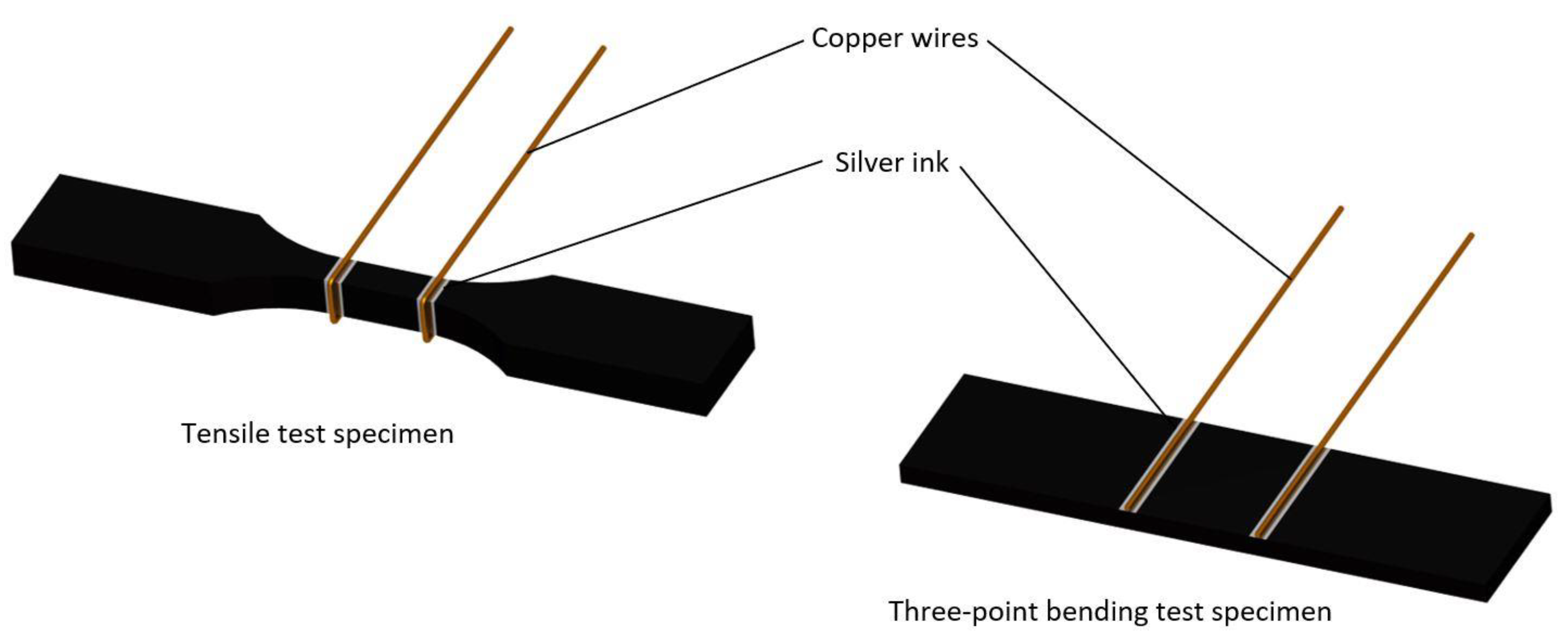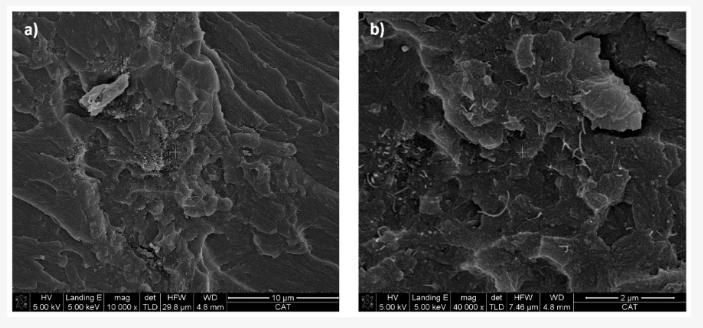A team of researchers from Rey Juan Carlos University, Madrid have 3D printed a set of self-sensing composite parts using DLP 3D printing technology. By reinforcing a commercially available photopolymer resin with carbon nanotubes (CNTs), the scientists were able to further functionalize it with electrical conductivity, citing promising applications in structural health monitoring.
The researchers explain: “Their addition in low contents into an insulator resin allows the formation of electrical percolating networks inside the material, leading to an increase in electrical conductivity of the material of several orders of magnitude.”

Structural health monitoring
Structural health monitoring is defined as the detection of strain damage in engineering structures such as buildings and bridges. CNT reinforced materials are great for this as the CNTs add an element of electrical conductivity into the mix. By running an electrical current through different entry and exit points in the structure, the precise point of structural damage can be triangulated by simply tracing the lines back to the point where the electrical connection is weakest. The fact that the composite itself inherently contains the ‘conductive wiring’ makes it self-sensing. CNT reinforcements, like many additives, also provide physical structural integrity, allowing for the manufacturing of stronger parts.
3D printing self-sensing composites
The researchers started off by 3D printing six composite samples with varying CNT content ranging from 0.03% to 0.15% by weight. A professional B9 Creator DLP machine was used to fabricate the samples. The samples with the higher CNT content had to be UV exposed for longer as the nanotubes generated a ‘UV shielding’ effect, resulting in insufficient curing.
Once the samples were prepared, the team got to work on assessing the effects of CNT content on electrical conductivity. The printed parts were subjected to tensile tests and three-point bending tests, with the currents running through the samples measured and documented during every experiment. The electrical connections were made via copper wires on the surface of each part, with silver conductive paste mitigating any inter-material resistance at the connection points.

The strain sensing tests revealed a strong linear correlation between electrical resistance and applied strain. Interestingly, the sensitivity of the sensors increased as CNT content decreased. The researchers attributed this to a higher interparticle distance, meaning the lower CNT contents were closer to the percolation threshold, allowing for easier electrical charge transport. Ultimately, the team concluded that their work proved the potential of DLP-fabricated, CNT reinforced composites for precise structural health monitoring.

Further details of the study can be found in the paper titled ‘Mechanical and Strain-Sensing Capabilities of Carbon Nanotube Reinforced Composites by Digital Light Processing 3D Printing Technology’. It is co-authored by Alejandro Cortés, Xoan F. Sánchez-Romate, Alberto Jiménez-Suárez, Mónica Campo, Alejandro Ureña, and Silvia G. Prolongo.
A similar study was conducted at the Netherlands-based Brightlands Materials Center earlier this year, except the self-sensing composite parts were 3D printed via FDM. Continuous carbon fibers were systematically co-extruded alongside the main polymer matrix, allowing for end-to-end electrical connections to be made. Similarly, the researchers found a clear correlation between applied load and electrical resistance. Elsewhere, in China, researchers employed a similar DLP method with a tough and conductive polymer hydrogel to produce flexible, wearable motion sensors.
The nominations for the 2020 3D Printing Industry Awards are now open. Who do you think should make the shortlists for this year’s show? Have your say now.
Subscribe to the 3D Printing Industry newsletter for the latest news in additive manufacturing. You can also stay connected by following us on Twitter and liking us on Facebook.
Looking for a career in additive manufacturing? Visit 3D Printing Jobs for a selection of roles in the industry.
Featured image shows DLP printed composite parts. Photos via RJCU.



